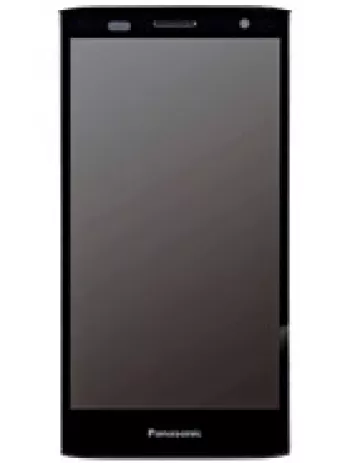
Introduction to Panasonic X800
The Panasonic X800 was a notable addition to the mobile phone market in the mid-2000s, especially for those who appreciated the functionality and design of devices running the Symbian operating system. Released in the first quarter of 2005, this phone came at a time when the mobile technology landscape was undergoing significant changes, with the introduction of color displays, integrated cameras, and advanced operating systems.
Design and Build
The Panasonic X800 was designed with a classic candy bar form factor, which was prevalent at the time. It featured dimensions of 100 x 48 x 17 mm, weighing in at 99 grams. This design was compact and lightweight, making it easy to carry around. The use of durable materials ensured that the X800 could withstand daily usage without showing signs of wear and tear easily. The device also supported a Mini-SIM, typical of the era.
Display
The X800 sported a 2.2-inch TFT display capable of showing 65K colors. This screen size and quality were suitable for everyday mobile tasks in the mid-2000s, such as messaging, basic web browsing, and running various applications. With a resolution of 176 x 208 pixels and a pixel density of approximately 124 ppi, the display was clear and bright enough for users to interact with comfortably.
Camera
Equipped with a VGA camera featuring an LED flash, the X800 allowed users to take photos and record videos, albeit at a modest quality by today's standards. The camera was primarily suitable for quick snapshots and casual photography, which was common among phones from that era.
Performance and Operating System
Under the hood, the Panasonic X800 was powered by a 104 MHz ARM 920T processor, running on the Symbian OS 7.0s with the Series 60 v2.0 UI. At the time, Symbian was a leading operating system for smartphones, known for its efficiency and wide range of applications. This made the X800 quite versatile for software needs in its day.
Memory and Storage
The phone included 8MB of internal storage, which was expandable via a miniSD card slot, with a 16MB card included in the package. This storage capability allowed users to keep essential apps, photos, and messages on their devices, although extensive multimedia storage necessitated additional memory expansion.
Battery Life
The X800 came with a removable Li-Ion 720 mAh battery. This provided a standby time of up to 230 hours and a talk time of up to 5 hours, which was quite adequate for users who used their phones primarily for calls and messages. The removable aspect allowed users to carry spare batteries for extended usage.
Connectivity
The Panasonic X800 supported GSM networks with bands suitable for GSM 900 / 1800 / 1900. For mobile data, it featured GPRS Class 10 but lacked EDGE capability. While Wi-Fi was absent, the device offered Bluetooth 1.1 and an infrared port for connectivity. It also featured a proprietary USB port for charging and data transfer.
Sound and Alerts
The phone did not include a loudspeaker but offered vibration and downloadable polyphonic ringtones for alerts. It lacked a 3.5mm jack, which was common at the time, so users needed to rely on the phone's ringtones and vibrating function for notifications.
Additional Features
The X800 included a WAP 2.0/xHTML browser for basic web browsing. While mobile browsing capabilities were limited compared to today's standards, they were sufficient for accessing mobile-friendly websites and services during that period.
Conclusion
The Panasonic X800 stands as a significant example of early smartphone development. It combined essential communication features with the burgeoning possibilities offered by Symbian OS. Although the device's specs are modest by today's high-tech standards, the X800 provided a reliable and versatile user experience in the mid-2000s. As mobile technology continued to advance, devices like the X800 laid the groundwork for the smartphones we use today.
Key Features of Panasonic X800
- Compact and lightweight design with dimensions of 100 x 48 x 17 mm and a weight of 99 g.
- TFT display with 65K colors and a resolution of 176 x 208 pixels.
- Powered by Symbian OS 7.0s with a Series 60 v2.0 UI and a 104 MHz ARM 920T processor.
- Expandable storage via miniSD card slot with 16 MB card included.
- VGA main camera with LED flash and video recording capability.
- Bluetooth 1.1 for wireless connectivity.
- WAP 2.0/xHTML browser for internet access.
- Removable Li-Ion 720 mAh battery providing up to 230 hours of standby time and up to 5 hours of talk time.
Panasonic X800 Disadvantages
- No EDGE support for faster data connectivity.
- Discontinued status means it may lack support and service.
- Screen-to-body ratio is low, resulting in smaller display size.
- Low display resolution of only 176 x 208 pixels.
- Limited internal memory of 8MB which restricts storage capacity.
- VGA camera lacks high resolution for photos and videos.
- No selfie camera.
- No loudspeaker, limiting the audio output options.
- Lacks 3.5mm headphone jack, requiring proprietary accessories.
- No WLAN support for Wi-Fi connectivity.
- No built-in GPS, limiting navigation capabilities.
- No FM Radio feature.
- Uses a proprietary USB connection reducing compatibility with standard cables.

View Also
More Phones
All Rights Reserved +14266 Phones © Mobilawy 2025

























